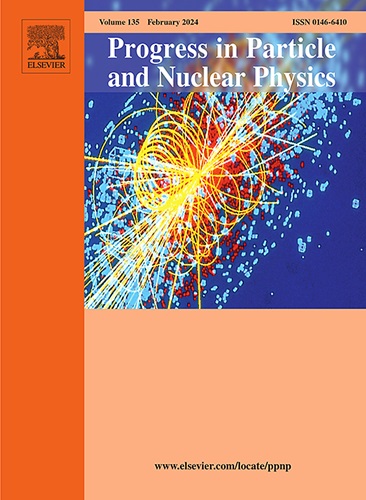Mapping parton distributions of hadrons with lattice QCD
IF 17.9
2区 物理与天体物理
Q1 PHYSICS, NUCLEAR
引用次数: 0
Abstract
The strong force which binds hadrons is described by the theory of quantum chromodynamics (QCD). Determining the character and manifestations of QCD is one of the most important and challenging outstanding issues necessary for a comprehensive understanding of the structure of hadrons. Within the context of the QCD parton picture, the parton distribution functions (PDFs) have been remarkably successful in describing a wide variety of processes. However, these PDFs have generally been confined to the description of collinear partons within the hadron. New experiments and facilities provide the opportunity to additionally explore the three-dimensional structure of hadrons, which can be described by generalized parton distributions (GPDs), for example.
In recent years, a breakthrough was made in calculating the Bjorken- dependence of PDFs in lattice QCD by using large-momentum effective theory (LaMET) and other similar frameworks. The breakthrough has led to the emergence and rapid development of direct calculations of Bjorken--dependent structure. In this review article, we show some of the recent progress made in lattice QCD in PDFs and GPDs and discuss future challenges.
用点阵QCD映射强子的部分子分布
量子色动力学(QCD)理论描述了束缚强子的强力。确定QCD的性质和表现是全面理解强子结构所必需的最重要和最具挑战性的突出问题之一。在QCD部分图的上下文中,部分分布函数(pdf)在描述各种各样的过程方面非常成功。然而,这些pdf通常局限于强子内共线部分的描述。新的实验和设备为进一步探索强子的三维结构提供了机会,例如可以用广义部分子分布(GPDs)来描述。近年来,利用大动量有效理论(LaMET)和其他类似框架,在计算晶格QCD中pdf的Bjorken-x依赖方面取得了突破。这一突破导致了bjorken -x相关结构的直接计算的出现和迅速发展。在这篇综述文章中,我们展示了pdf和gpd中晶格QCD的一些最新进展,并讨论了未来的挑战。
本文章由计算机程序翻译,如有差异,请以英文原文为准。
求助全文
约1分钟内获得全文
求助全文
来源期刊

Progress in Particle and Nuclear Physics
物理-物理:核物理
CiteScore
24.50
自引率
3.10%
发文量
41
审稿时长
72 days
期刊介绍:
Taking the format of four issues per year, the journal Progress in Particle and Nuclear Physics aims to discuss new developments in the field at a level suitable for the general nuclear and particle physicist and, in greater technical depth, to explore the most important advances in these areas. Most of the articles will be in one of the fields of nuclear physics, hadron physics, heavy ion physics, particle physics, as well as astrophysics and cosmology. A particular effort is made to treat topics of an interface type for which both particle and nuclear physics are important. Related topics such as detector physics, accelerator physics or the application of nuclear physics in the medical and archaeological fields will also be treated from time to time.
 求助内容:
求助内容: 应助结果提醒方式:
应助结果提醒方式:


